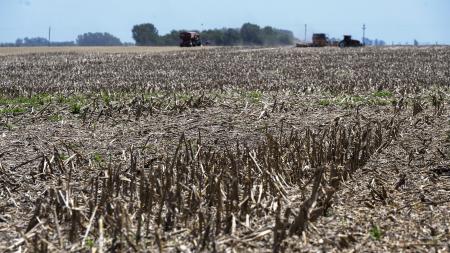The Ministry of Agriculture, Livestock and Fisheries reported that, according to studies by technicians from the National Institute of Agricultural Technology (INTA), “the end of the La Niña phenomenon is expected for February” and they forecast three rain events for the next 14 days of varied intensity over the center and north of the country.
This was indicated by the agricultural portfolio after a meeting held by the Secretary of Agriculture, Livestock and Fisheries, Juan José Bahillo, with the Director of INTA’s Agricultural Research Center (CNIA), Pablo Mercuri and his technical team to analyze rainfall expectations. , the areas affected by drought and lack of rain.
Likewise, they began to outline the main points of the situation report on the impact of climate change that will be presented to the Minister of Economy, Sergio Massa.
“INTA technicians declared the end of the La Niña phenomenon for February. This phenomenon brought with it droughts and a notable drop in the rivers, during the last three years. In this way, it would begin a stage that would go from a ‘neutral’ , to one in which the chances of rain gradually increase throughout the country until the arrival of the El Niño phenomenon, which brings abundant rainfall”indicated the statement of Agriculture.
According to the Agrometeorological report, provided by INTA, three instances of rain and storms of varying intensity are expected for the next 14 days over most of the center and north of the country.
In addition, the work highlights that “some accumulations could be important in the regions with deficits” in relation to the drought that some areas of the national territory are going through.
Mercuri maintained that “for areas with water scarcity, in principle, we see better chances of precipitation in the next few days than in the first stage of January.”
“If this materializes, many areas could improve their crop conditions and we could start with a gradual improvement in terms of water availability due to different precipitation events,” added the specialist.
Along the same lines, the CNIA director said that “the trend of precipitation events can also be extended to February. These are the conditions analyzed to date. They are always probabilistic scenarios that must be updated day by day, especially in this context of marked cooling in the Pacific Ocean that reduces and changes the circulation of winds and masses of humidity in the atmosphere over our productive region”.
On the other hand, Agriculture clarified that “beyond the diagnostics of the situation established by INTA, it is important to highlight that as of today, estimates cannot be made on planting given that in large areas of the country it has not yet materialized and in those where it did become effective, it remains to wait at least 30 days to carry out some type of analysis”.








